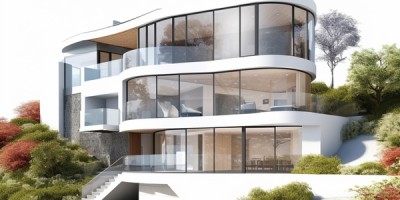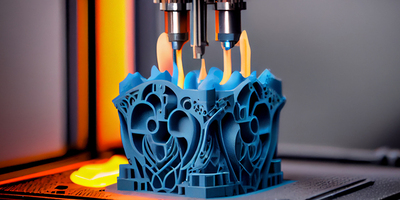Autodesk Revit MEP is a Building Information Modeling (BIM) software specifically designed for mechanical, electrical, and plumbing (MEP) engineering. It enables engineers and designers to create intelligent 3D models of building systems that are coordinated, accurate, and ready for construction documentation.
Revit MEP goes beyond traditional CAD by integrating design, analysis, and documentation in a single platform. It allows MEP engineers to collaborate seamlessly with architects and structural engineers, ensuring that systems such as HVAC, electrical, and plumbing are clash-free and optimized within the building design.
The software is widely used in the AEC industry for designing and managing building services systems in residential, commercial, and industrial projects.
Industry-standard software for MEP design and BIM workflows.
Improves project efficiency through accurate modeling and system coordination.
Prepares learners for careers in HVAC, electrical, plumbing, and building services engineering.
Provides practical skills for design, documentation, and collaboration in modern construction projects.
BIM-Based MEP Modeling – Create intelligent 3D models of mechanical, electrical, and plumbing systems.
Coordination & Clash Detection – Detect conflicts between MEP systems and structural/architectural elements.
Documentation & Scheduling – Automatically generate construction drawings, schedules, and reports.
Analysis Integration – Perform system analysis for HVAC, lighting, and plumbing networks.
Collaboration – Work in a shared BIM environment with architects, structural engineers, and contractors.
Design heating, ventilation, and air-conditioning systems for residential, commercial, and industrial buildings.
Model ductwork, air terminals, and mechanical equipment accurately.
Develop power distribution, lighting layouts, cable trays, and electrical circuits.
Generate schedules and panel layouts for construction documentation.
Design water supply, drainage, and gas piping networks.
Ensure compliance with relevant building codes and standards.
Detect and resolve conflicts between MEP systems and architectural/structural elements.
Collaborate effectively with architects, structural engineers, and contractors in a BIM workflow.
Generate construction-ready drawings, schedules, and reports automatically.
Perform system analysis for HVAC, electrical, and plumbing networks.
By the end of this course, learners will be able to:
Understand the Revit MEP interface and BIM-based workflow for building systems design.
Create intelligent 3D models for mechanical, electrical, and plumbing systems.
Design HVAC systems including ducts, diffusers, and equipment layouts.
Develop electrical systems with circuits, lighting, and cable management.
Model plumbing and piping networks for water supply, drainage, and gas systems.
Perform clash detection to ensure coordinated and clash-free designs.
Generate construction documentation including drawings, schedules, and reports.
Collaborate with architectural and structural models for integrated BIM projects.
Apply industry standards and building codes in MEP design.
Build professional skills for careers in MEP engineering, BIM coordination, and building services design.
100 Hours of Class

Component Based Training
Industry Based Training
International Certifications
100% Placement Assistance
Free Certified Workshops & Seminars
Syllabus Based Classes

Component Based Training
Industry Based Training
International Certifications
100% Placement Assistance
Free Certified Workshops & Seminars
Syllabus Based Classes

Component Based Training
Industry Based Training
International Certifications
100% Placement Assistance
Free Certified Workshops & Seminars
Syllabus Based Classes

Component Based Training
Industry Based Training
International Certifications
100% Placement Assistance
Free Certified Workshops & Seminars
Syllabus Based Classes

Component Based Training
Industry Based Training
International Certifications
100% Placement Assistance
Free Certified Workshops & Seminars
Syllabus Based Classes

Component Based Training
Industry Based Training
International Certifications
100% Placement Assistance
Free Certified Workshops & Seminars
Syllabus Based Classes

Component Based Training
Industry Based Training
International Certifications
100% Placement Assistance
Free Certified Workshops & Seminars
Syllabus Based Classes
No: #172, Raahat Plaza,
2nd Floor, Office No: 196 & 197,
Arcot Road, Vadapalani,
Chennai - 600026.
caddschool@gmail.com
© CADD SCHOOL. All Rights Reserved. CADD SCHOOL